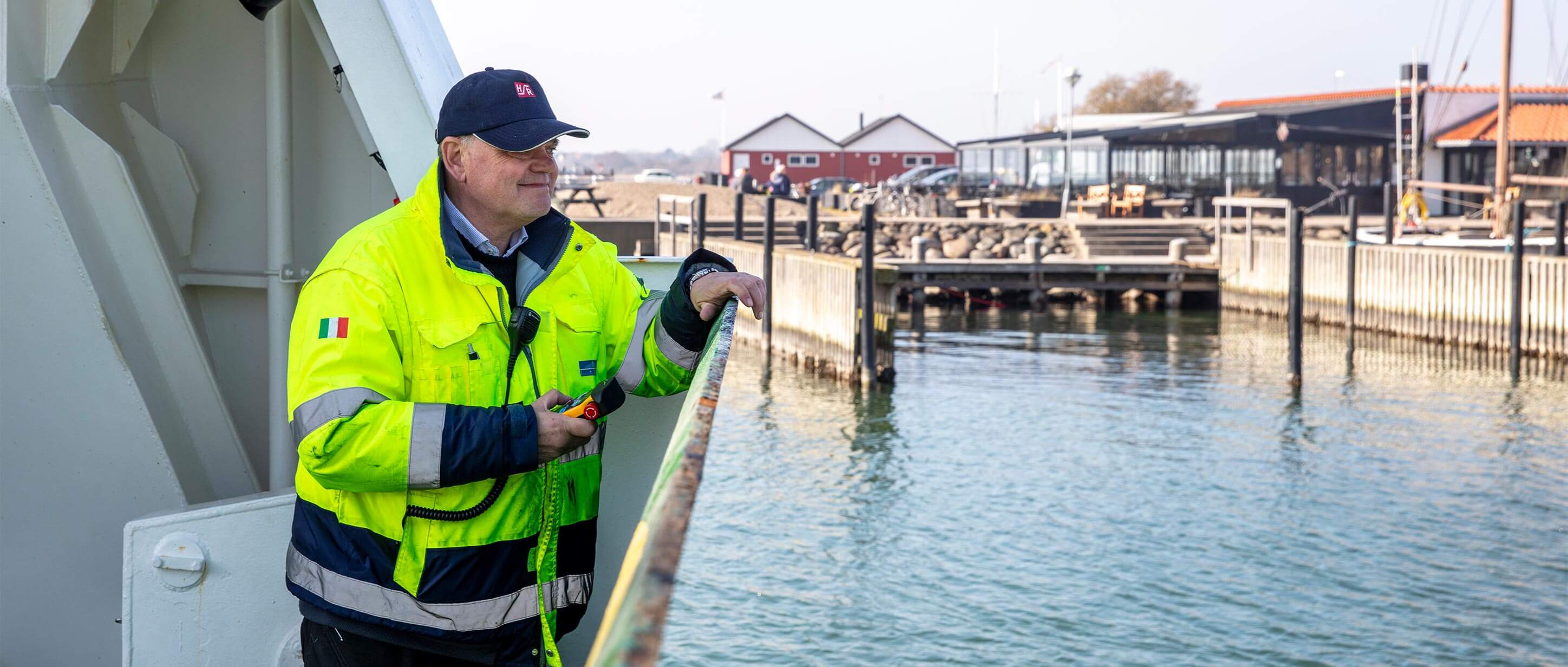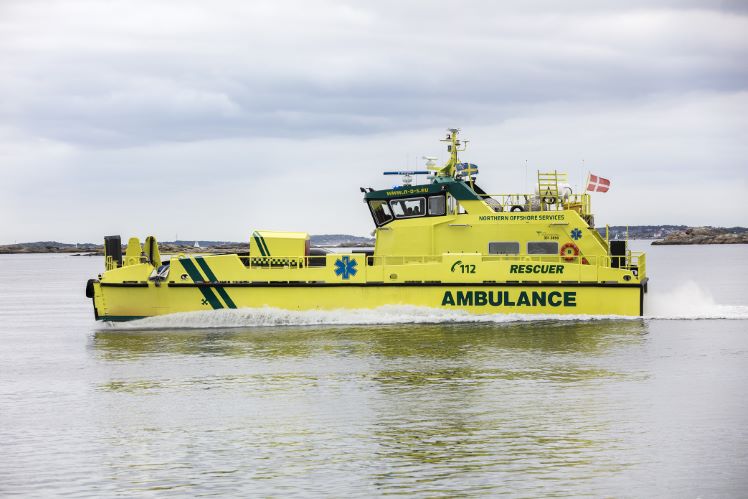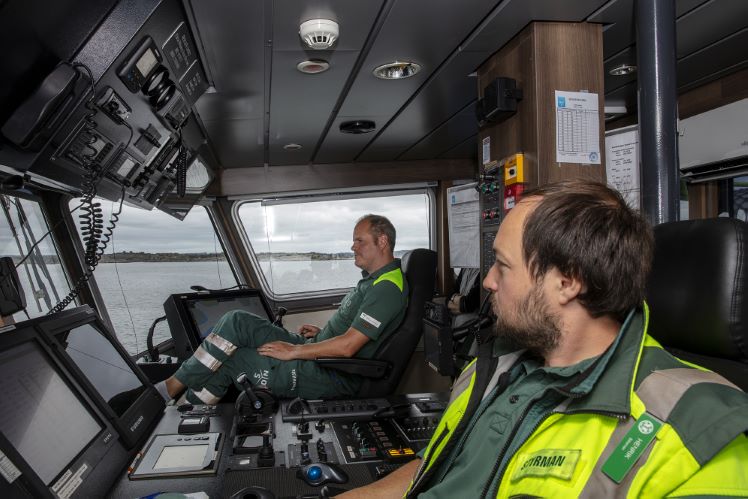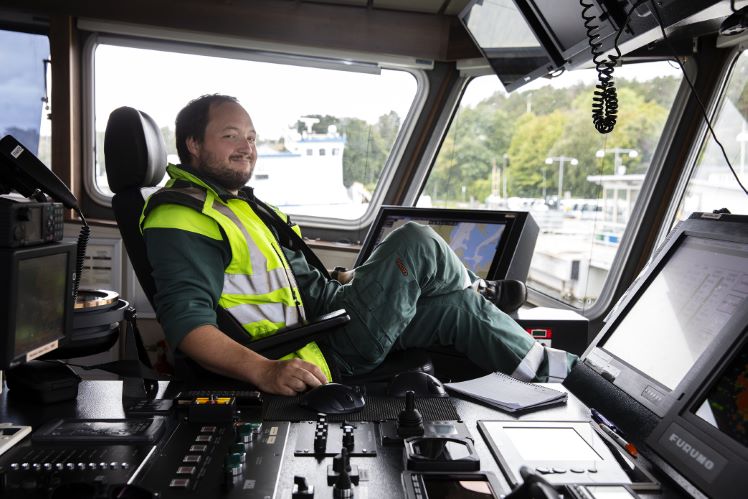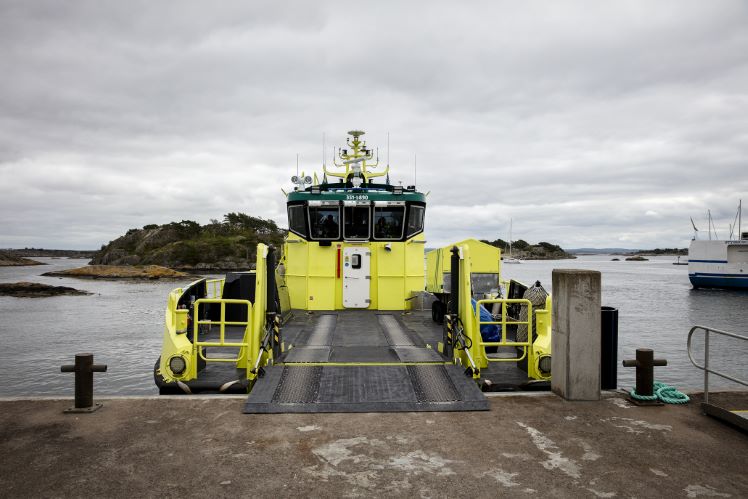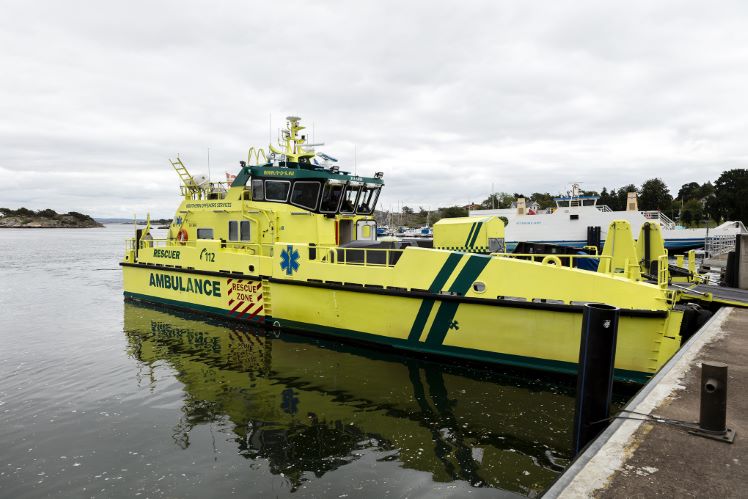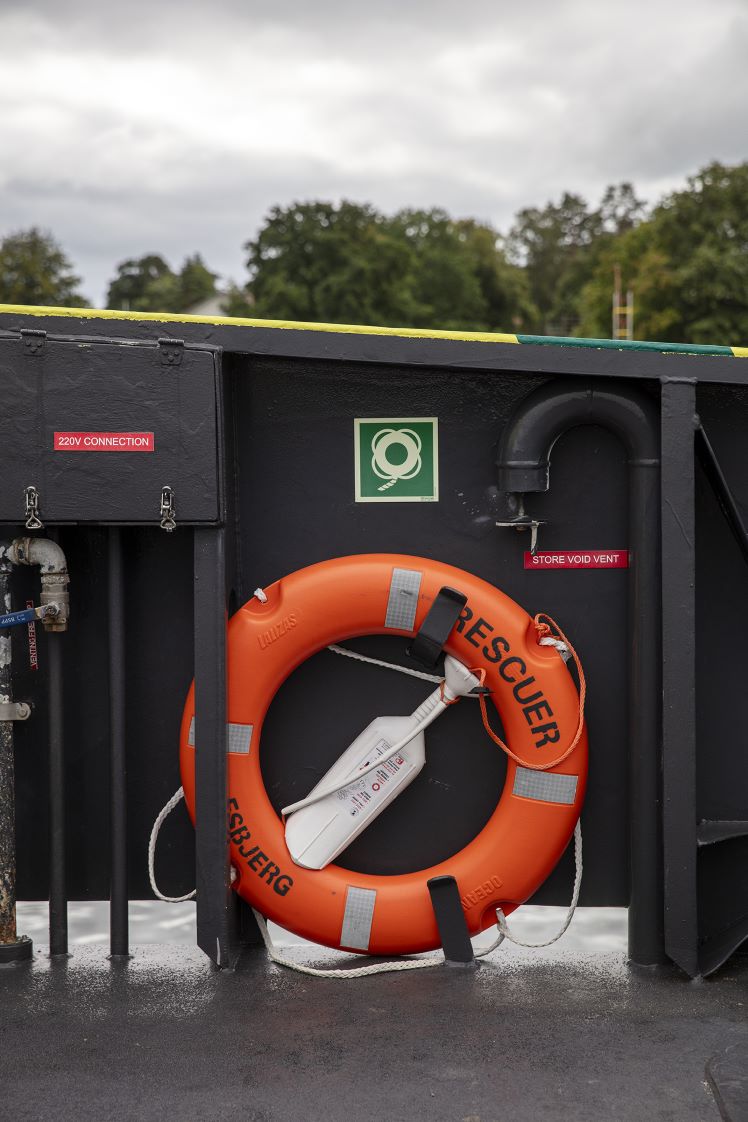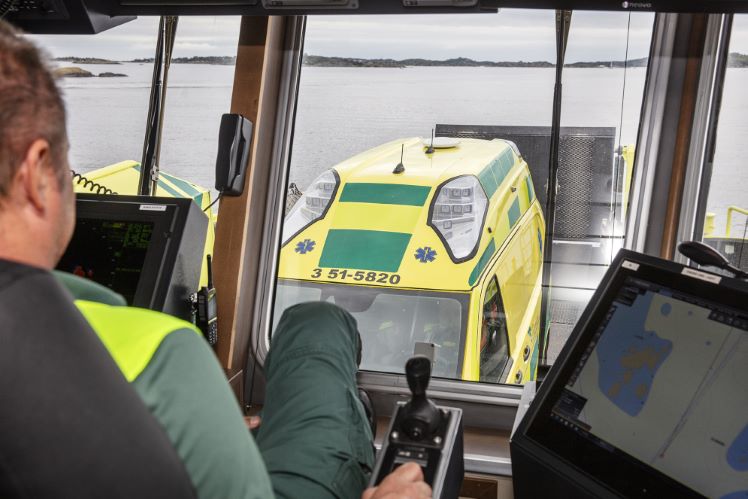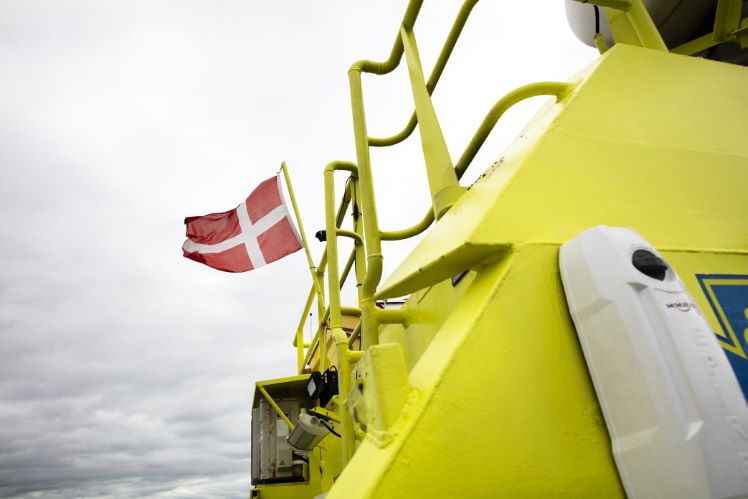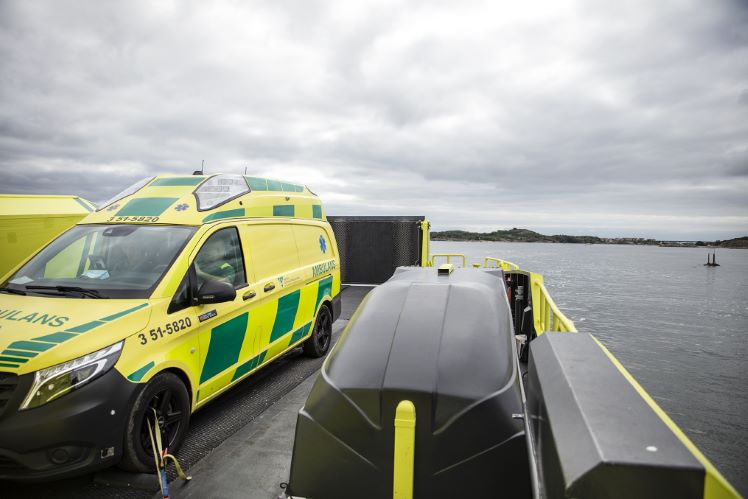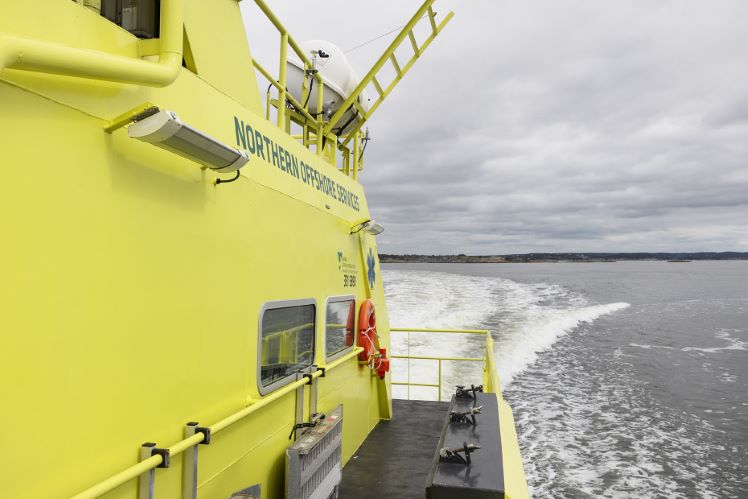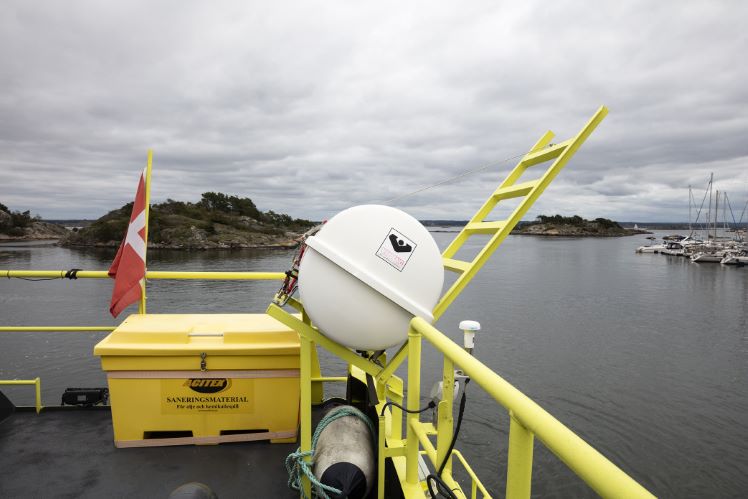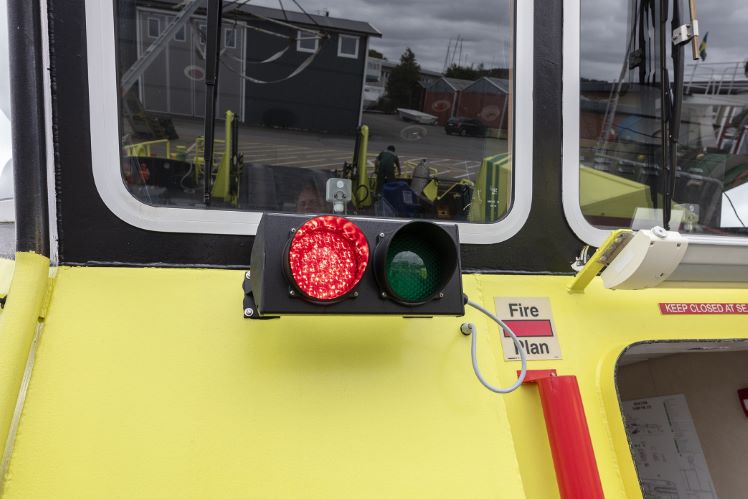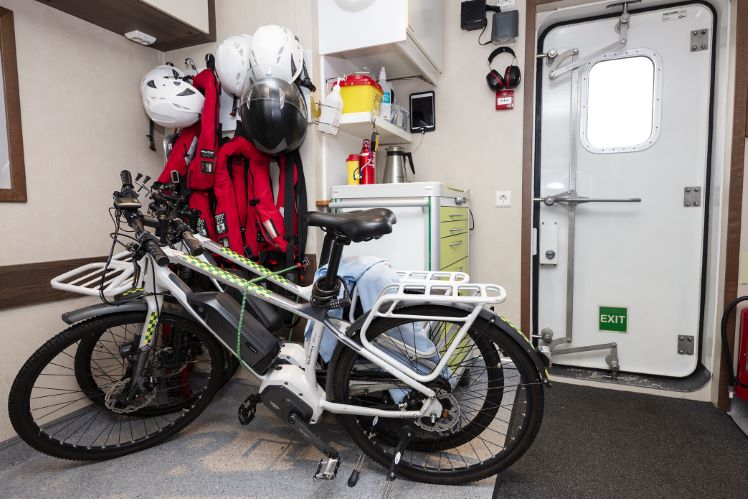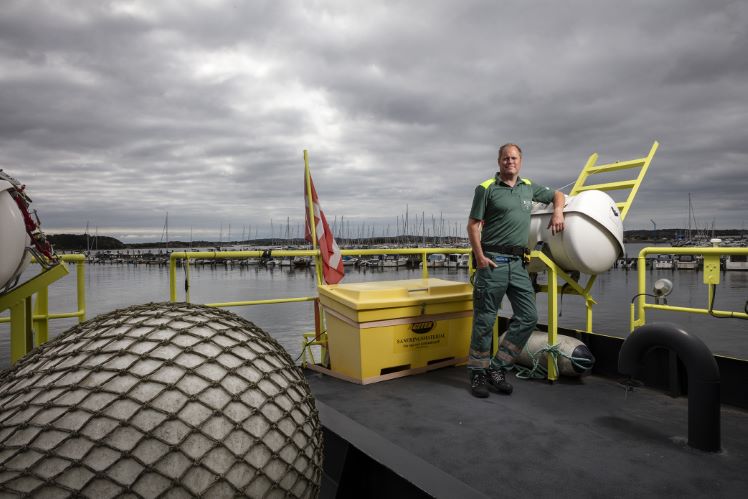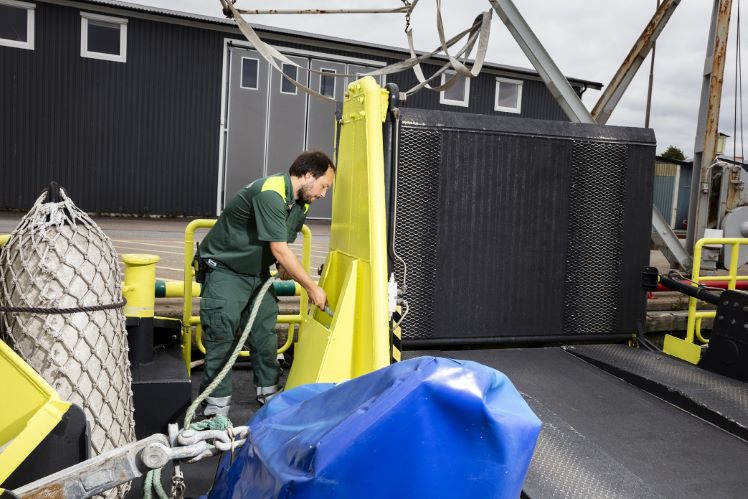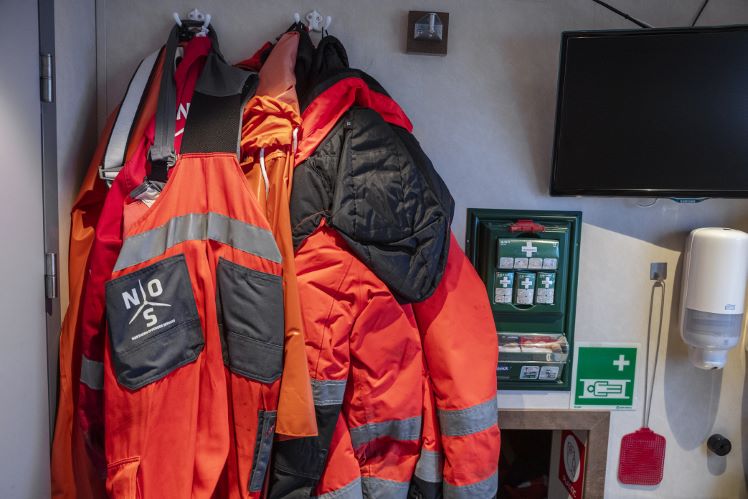Although speed is often of the essence on an ambulance boat, keeping a cool head is one of the best things one can do for safety onboard. Thus reads the message from the two-man crew of the M/V Rescuer, which UFDS has visited in the Gothenburg archipelago.
"Better small and awake..." starts a well-known saying, and without in any way calling any of the other vessels UFDS has visited lately lazy, the two terms are very much appropriate for ambulance boat M/V Rescuer operating in the archipelago off Gothenburg.
In this function, the boat is quite the oddity, as helmsman Henrik Johansson explains when UFDS visits the vessel on the island of Donsö, which is the base for M/V Rescuer. Together with captain Niklas Rosengren, he forms the crew of the 21-meter-long and almost eight-meter-wide ship.
Rescuer is operated by shipping company Northern Offshore Services (N-O-S) and covers an area of approximately 100 square kilometers with around 20 permanently inhabited islands numbering around 20,000 inhabitants – plus the numerous guests visiting the holiday homes during summer not least.
With its size and a top speed of approximately 30 knots, Rescuer can quickly be present at an island in case of acute illness. The longest trip from north to south (or vice versa) thus takes 35-40 minutes depending on the conditions and with a normal cruising speed of 23-24 knots.
On board the boat is a fully equipped ambulance and two paramedics who are put ashore to locate the patient and provide first aid. If necessary, the ambulance takes the patient back to the boat, which then sails towards the mainland so that the patient can proceed to the hospital.
If lives are at stake, the boat's own ambulance makes the trip, alternatively the patient is transferred to another vehicle, allowing Rescuer to maintain preparedness. A return journey to the hospital takes about an hour, so should something happen while the boat is on standby, an ambulance can be sent from the mainland.
Only in extremely rare cases is a helicopter deployed, but as it will usually have difficulty landing and also covers a much larger area on land, M/V Rescuer with its status as a fast response vessel (FRV), is normally the most effective tool in everyday life.
With speed as an obvious priority when the alarm sounds, tasks must of course be carried out with safety in mind – both for crew, nursing staff and patient(s). When asked what the most important thing one can do for safety is, Henrik and Nicklas answer almost in unison:
»Keep your cool. Stressing to get there doesn’t help the patient, it only increases the risk of crashing or causing an accident along the way. It's better to get there a little slower than to almost get there a little faster,« Niklas Rosengren says.
Weather conditions doesn't matter
The M/V Rescuer was built at Grovfjord Mekanisk Verksted on Lofoten in Norway in 2015 and later put into operation in Gothenburg. After an initial period where ‘we sailed on everything', as Henrik Johansson puts it, routines and rhythm are now in place.
The boat is on duty 24 hours a day 365 days a year, and the crew rotates in two teams that are on the boat one week at a time. Close to the base on Donsö, N-O-S has a small house where the captain and helmsman spend the night and can stay during quiet periods.
Those are however somewhat scarce. Rescuer receives an average of two to three alarms a day of various nature, ranked in categories 1-4, where 1 is the most serious and involves acute danger to the life of the injured party.
With such a relatively high level of activity – the crew conducts weekly exercises with, for example, the lifeboats, oil spills or the man-overboard crane, when there are no alarms to call – it almost goes without saying that safety concerns to a large extent needs to be incorporated practice rather than an issue requiring extensive procedures.
»I can't say that I go around thinking about safety all the time, it's more of a routine. We have 20 years of experience at sea between us, so it becomes a matter of habit. After all, you also evolve with age; when you were 20 you could climb all over the place, but you get better and can understand the consequences in a different way,« 36-year-old Henrik Johansson says, with Niklas Rosengren, 44, nodding in agreement.
In addition, of course, there are rules to deal with, as Henrik points out. This applies not least to offshore wind farms, N-O-S' largest area of work and an arena where energy companies have high safety standards.
»On board, we work very pragmatically with safety; we do what is necessary to handle safety in the best possible way. Even in quiet weather like today, we always strap the ambulance in. With our routines in place, we feel that we are in control of the risks that exist, but there’s always room for improvement,« Niklas Rosengren says.
In sharp contrast to, for example, conditions at Royal Arctic Line, the weather poses virtually no concern for the Rescuer, keeping in mind that the inland waters around Gothenburg doesn’t exactly offer challenges to match in this case the open sea surrounding Greenland.
Niklas Rosengren has been on the boat since its deployment in 2015 and has never seen weather conditions that have prevented Rescuer from doing its job. Both hull, axles and propellers are reinforced for sailing in ice, a rare challenge in itself.
»I remember two winters where it was an issue we had to deal with. But it's just been a matter of slowing down a bit, and sailing with the floodlights on at night to be able to see the ice floes,« he says.
»It's actually mostly a problem when the ice starts to loosen and come out here from the Göta river, because it's fresh water, so it's some hard lumps. But we're built to handle a five-centimeter thick layer,« Henrik Johansson adds.
During UFDS’ visit, the alarm went off twice. Read the full story here.
M/V Rescuer
- Built: 2015
- Hull: Aluminum, ice-reinforced along the waterline
- Length: 21.25 meters
- Width: 7.66 meters
- Draft: 1.3 meters
- Height above the waterline: 8 meters
- Displacement (LDT): 57.1 tonnes
- Deck crane: 1 Palfinger PC 2700 M with a lifting capacity of 1,745 kg
- Main engines: 2 Caterpillar C32 ACERT with an output each of 1081 kW at 2100 rpm
- Auxiliary engines: 2 Perkins Stamford with an output each of 22.5 kW / 50 Hz



